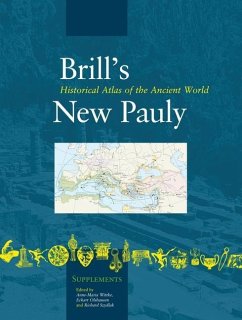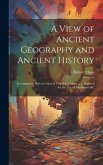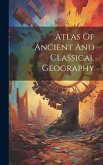Covering the 3rd millennium BC until the 15th century AD, this new atlas of the ancient world illustrates the political, economic, social and cultural developments in the ancient Near East, the Mediterranean world, the Byzantine Empire, the Islamic world and the Holy Roman Empire. The atlas has 170 large color maps that document the main historical developments. Each map is accompanied by a text that outlines the main historical developments. These texts include bibliographies and 65 additional maps, tables and stemmata that provide further elucidation.
"A valuable work produced to a high standard: large format, clear maps, though some beckon for a larger format or perhaps a double-page to themselves. ... The German editors and their publisher are to be warmly congratulated ... as is Brill for making an English version available." - Gocha R. Tsetskhladze, University of Melbourne, in: Ancient West and East 10 (2011)
"Conçu comme un supplément aux volumes 1-15 de l'encyclopédie New Pauli, ce superbe atlas [...] couvre une période s'échelonnant du troisième millénaire avant notre ère au XVe siècle, découpée en sept tranches ; il ne se limite pas aux relations de pouvoir et de commerce, mais s'intéresse aussi aux cultures et à leurs relations et met davantage l'accent sur le Proche-Orient ancien que d'autres atlas du même type." - R. Gounelle, in: Revue d'Histoire et de Philosophie Religieuses 2012, Tome 92 n° 4
"Conçu comme un supplément aux volumes 1-15 de l'encyclopédie New Pauli, ce superbe atlas [...] couvre une période s'échelonnant du troisième millénaire avant notre ère au XVe siècle, découpée en sept tranches ; il ne se limite pas aux relations de pouvoir et de commerce, mais s'intéresse aussi aux cultures et à leurs relations et met davantage l'accent sur le Proche-Orient ancien que d'autres atlas du même type." - R. Gounelle, in: Revue d'Histoire et de Philosophie Religieuses 2012, Tome 92 n° 4








